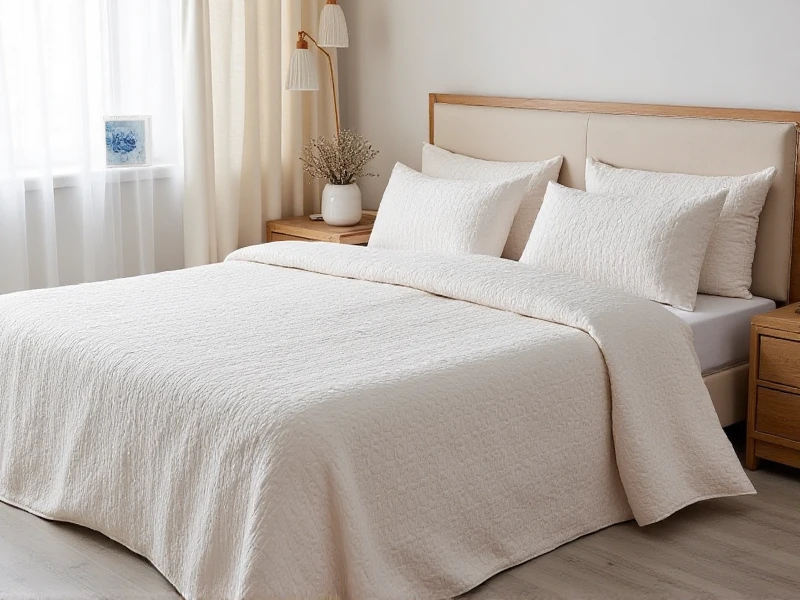The Fascinating World of Textiles: A Comprehensive Guide to Types, Uses, and Trends
2025-06-01

Textiles are far more than just fabrics—they weave through the very fabric of human history, influencing cultures, economies, and daily life in profound ways. From the soft cotton sheets we sleep on to the high-tech fibers in sports gear, textiles surround us at every turn. This guide delves deep into this versatile world, exploring different types of textiles, their applications across industries, and emerging innovations that are shaping our future. As demand grows for sustainable and innovative materials, understanding textiles becomes crucial for consumers, designers, and businesses alike. Let's unravel the threads that connect us to this essential industry.
In its simplest form, textiles refer to materials made by interlacing fibers, threads, or yarns through weaving, knitting, crochet, or other methods. These creations can be as ancient as linen used in Egyptian tombs or as modern as biodegradable fibers designed to combat plastic pollution. The history of textiles stretches back millennia; archaeological evidence shows early humans crafting fabrics from plant fibers as early as 30,000 years ago. Fast-forward to the Industrial Revolution, and innovations like the spinning jenny transformed textile production into a global powerhouse, driving mass production and trade. Today, textiles remain a cornerstone of economies worldwide, with the global textile industry valued at over a trillion dollars annually. They touch nearly every aspect of life, from fashion and home decor to healthcare and automotive sectors.
Types of Textiles: From Natural to Man-Made
Diving into categories, textiles fall broadly into two groups: natural and synthetic. Natural textiles originate directly from plants, animals, or minerals, offering breathable and eco-conscious options. Cotton stands as a favorite—soft, absorbent, and versatile, it's grown in over 80 countries and dominates everyday wear like T-shirts and jeans. Then there's wool, sourced from sheep, goats, or alpacas; it's incredibly warm and moisture-wicking, making it ideal for winter apparel and luxury blankets. Silk, spun from silkworms, exudes elegance with its smooth texture and lustrous shine, often seen in high-end fashion. Lastly, linen, made from flax plants, provides a sturdy and cool fabric perfect for summer clothing and table linens.
Synthetic textiles, or man-made fibers, emerged from scientific breakthroughs to enhance durability and performance. Polyester, invented in the 1940s, revolutionized the industry with its strength and resistance to wrinkles—it's used in everything from activewear to durable outdoor fabrics. Nylon follows closely, known for its elasticity and toughness in items like stockings and parachutes. Rayon, derived from natural cellulose, offers a silk-like quality at lower costs, while innovations like spandex provide stretch for athletic wear and form-fitting clothes. Blends of natural and synthetic textiles combine the best of both worlds; for instance, poly-cotton mixes balance comfort with easy care, popular in uniforms and bedding. Each type comes with unique properties, influencing choices based on needs like cost, sustainability, or function.
Applications: Where Textiles Transform Industries
Textiles extend well beyond the runway, embedding themselves in diverse fields through practical and often life-saving roles. In the fashion realm, they're the bedrock of expression—runway designers experiment with bold prints and textures in collections, while mainstream brands innovate with washable wools and wrinkle-resistant blends for busy lifestyles. Home textiles dominate interior spaces: plush carpets add warmth, curtains filter light beautifully, and upholstered furniture relies on durable weaves like velvet or denim for longevity. Even the kitchen sees textiles in dish towels and oven mitts.
Healthcare applications highlight textiles' critical advances. Medical textiles include surgical gowns and bandages made from sterile, non-contaminating fibers that promote healing. Advances like antimicrobial coatings reduce infections, and smart textiles incorporate sensors to monitor patient vitals in real-time—imagine a hospital robe tracking heart rate. The automotive sector leverages heavy-duty textiles for seats, airbags, and insulation, with composites like Kevlar offering high-strength safety features. Industrial contexts use geotextiles to reinforce roads and control erosion, while protective gear in construction relies on fire-resistant fabrics. As technology evolves, expect textiles to play even bigger roles in wearable gadgets and eco-packaging.
Future Innovations and Sustainability Trends
The textile industry faces urgent challenges, primarily sustainability, driving a wave of innovation for a greener future. Environmental concerns loom large—traditional methods consume vast water resources (cotton farming alone uses about 2.5% of the world's supply) and pollution from synthetic microplastics harms marine life. In response, sustainable textiles are gaining traction. Organic cotton, grown without pesticides, conserves resources and supports fair labor, while recycled polyester transforms plastic waste into new fabrics. Plant-based alternatives like Tencel, made from wood pulp, offer biodegradable options, and innovations in lab-grown silk reduce animal reliance.
Emerging trends include smart textiles that integrate technology for added functionality. Think temperature-regulating fabrics in sportswear or conductive fibers in clothing that interact with smartphones. Nanotechnology enhances fabrics with water-repellent coatings, while 3D knitting minimizes waste by crafting garments directly from yarn. Industry shifts toward circular economy models encourage recycling and upcycling old textiles—brands now offer take-back programs to turn discarded clothes into fresh materials. Consumer awareness is key: opting for certified textiles like Global Organic Textile Standard (GOTS) ensures ethical production. As demand for eco-fashion grows, experts predict that sustainable textiles could dominate the market by 2030, reducing carbon footprints and fostering innovation.
In conclusion, textiles represent a dynamic, ever-evolving field that touches everyone, making it essential to stay informed about their impacts. Whether you're a fashion enthusiast, a business owner, or simply a consumer, understanding types, uses, and sustainable options empowers better choices. As we look ahead, embracing innovation—like smart and biodegradable fabrics—can drive positive change for the planet. Share your thoughts on how textiles influence your life or explore more insights through related resources!
Category: